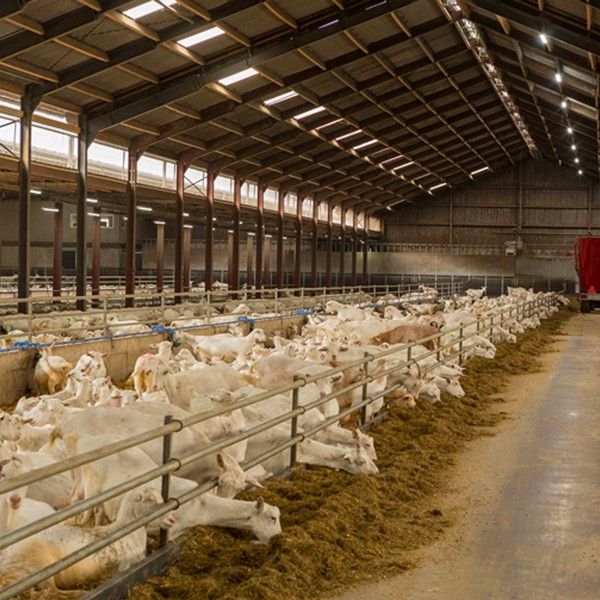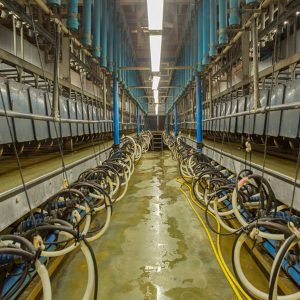Combining artificial light and daylight in a way that serves to balance and reinforce each other helps optimise health and production in goats. A period of at least 16 hours of light at a minimum of 200 lux causes an increase in the hormone IGF-F. An increase of this hormone leads to better production and fertility in goats. With the help of artificial light, this requirement can be met even in the darker months. That means that animals can remain productive at optimised levels year-round.
The high level of light that is required in the stable should be evenly distributed throughout the entire area. If the light is not optimally distributed and dark spots are present, this will disturb herd hierarchy and the calmness of the goats. In addition, even light distribution is important for both you and the goats in order to keep a clear overview of the stable.


The high level of uniformity in the light distribution combined with the use of a bright daylight colour ensures that you can identify any abnormalities in the animals more quickly and also allows for work to be carried out more easily in the stable. Thanks to the technical lighting options available and with the help of control systems and sensors, you can always maintain the right level of lighting for your situation.
It is very important for light fixtures to be resistant to dust and water in the stable and milking parlour. Another essential aspect is that the light should not produce any glare for you or the goats.
In addition to being dust and water resistant, Rofianda fixtures can also be switched on and off or dimmed. The fixtures are available in different power outputs from 40W up to 150W in the exact same design. That means that you can achieve even light distribution throughout the stable.
The fixtures have a wide beam angle and the light is distributed evenly throughout the stable and/or milking parlour.
If desired, Rofianda can also advise on control systems for the lighting. In some cases, the lighting can even be connected to existing systems.